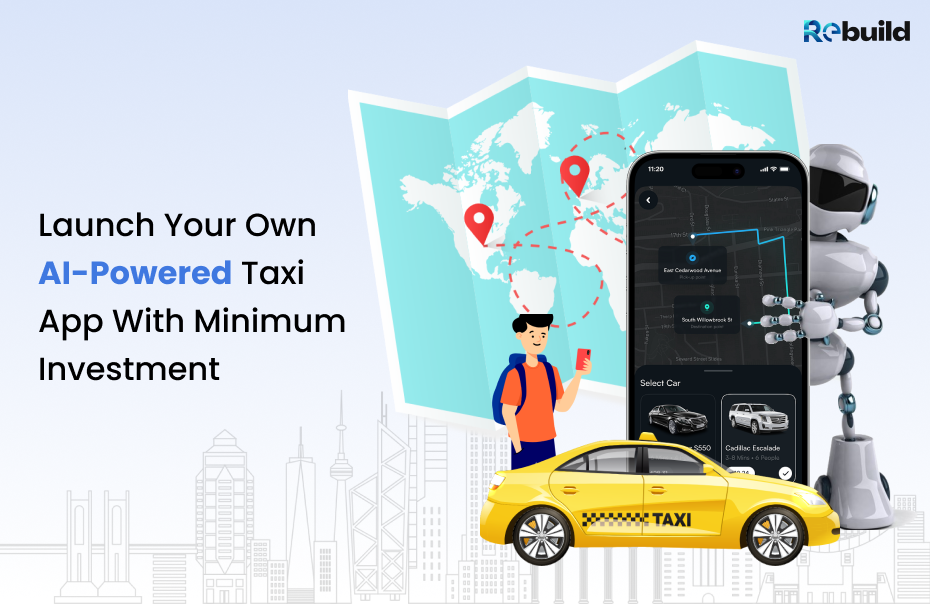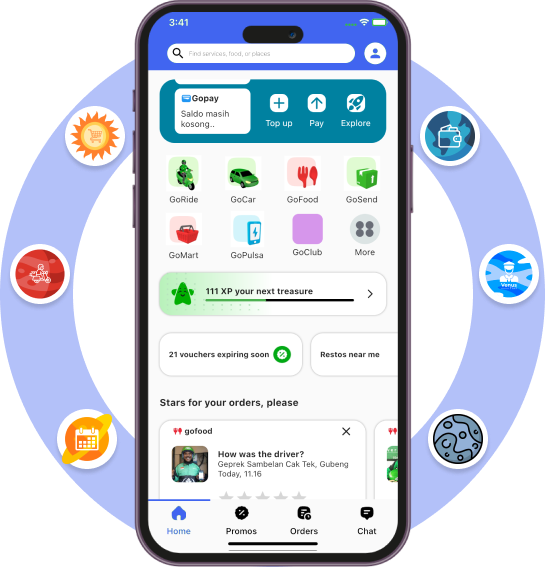Launch Your Own AI-Powered Taxi App With Minimum Investment
Over the past 20 years, the global transportation services sector has experienced exponential growth. Despite the fact that the epidemic has slowed down daily operations, the industry is projected to hit around USD 15.94 Trillion by 2032, at a CAGR of 8.11%. The ride-hailing industry has undergone significant change, though, and this has sparked a wave of development for taxi smartphone apps. The global taxi app market was valued at US$ 232.6 Billion in 2023 and it’s forecasted to reach US$ 357.9 Billion by 2032, at a CAGR of 4.9%. Model brands like Uber and Lyft occupy 71% and 29% of the market share, respectively, as of August 2020. We can safely say that in this day and age, cab smartphone apps are a must!Benefits of Having AI-Integrated Taxi App
Let’s see how the on-demand taxi services profit from the integration of AI:Route Optimization
When it comes to route optimization, an AI-powered taxi mobile app excels at letting drivers drop off passengers at their destination as quickly as feasible. The reasoning method used by artificial intelligence to construct precise driver routes is put into practice. This allows the drivers to get calls according to direction and time. For example, AI algorithms will make sure the driver only gets booking requests from locations close to point C if the driver is near point C. Taxi app development powered by artificial intelligence can work miracles!Personalized User Experience
Modern consumers dislike being handled like machines. They favor doing business with companies that place a strong emphasis on customization. Clients of ride-hailing services are not an exception. Use AI to your advantage when developing mobile apps for taxis to better understand your clientele. Keep track of eCommerce businesses and the rides that your consumers have taken previously. Kindly observe how frequently they book cabs, how long their rides last, and which destinations they visit the most; these are useful metrics to look into. Hence, customize the push alerts on their mobile devices and encourage them to ride when they often do, or provide a discount or time-limited coupon code once they have taken X number of rides with you. AI can assist you in making your taxi service more intelligent for them.Self-Directed Dispatch
Self-dispatch, a term used interchangeably with traditional taxi services, is the practice of any cab arriving at the earliest opportunity to a person in need without the assistance of their superiors. AI can help your taxi company deploy resources more effectively because it can be used for data mining and pattern detection. The driver may be automatically notified by the self-directed dispatch to pick up the closest passenger who has made a reservation. This improves the accuracy of taxi services and makes it possible for clients to receive seamless service.Smart Driver On-Boarding Process
The outstanding automation and user-friendliness that Artificial Intelligence Services can bring to your taxi application is remarkable. What’s even more amazing is that it can assist operators in designing and executing a driver onboarding process that is efficient. To begin with, AI can be included into a chatbot that responds to frequently asked questions from drivers. Additionally, AI-driven training programs can provide instant assistance to drivers who are having problems with the cab app. An AI-powered taxi app that just transfers drivers won’t cut it. You can’t presume they’d feel at ease utilizing the gadget. Consequently, implementing an onboarding procedure can make your taxi company seem sympathetic to its drivers, which can expand your network of drivers by word-of-mouth.App Sentiment Coding
Sentiment analysis, one of AI’s USPs, tells you where, when, and how your taxi app is being talked about by users and rival businesses. The conversations could take place on message boards, online forums, or social media platforms (like Quora or Reddit). Regardless of the platform, you can use external user input to improve your business offerings, adjust user policies, and update app features. You can also obtain practical insights into how the market perceives your taxi app.Steps To Develop An AI-Powered Taxi App
Are you curious about making a TAXI app? The procedures for creating an AI-powered taxi app are as follows:Step 1: Analysis of Requirements and Market Research
Doing a thorough market analysis is the first step in developing a TAXI app. Recognizing client gaps and wants, as well as forecasting demand trends, is crucial. You also need to examine reviews, current trends, and competing products. Once you’ve done your study, decide the essential elements to include.Step 2: Choose The Right Technology Stack
Selecting the appropriate technology to develop a strong taxi app is the next step. For example, several tech stacks function as dynamic backend solutions and enable cross-platform development. Think about utilizing AI- and real-time data processing-supporting frameworks. For example, cloud-based AI platforms are available for selection. Investigate various programming languages as well.Step 3: Design and User Experience
The most crucial stage is now upon us: designing. The goal of design is to provide a seamless user experience for the driver and the user, not just something beautiful. Clarity, accessibility, and simplicity should be the main priorities. Creating essential elements like transportation booking, real-time tracking, user registration and authentication, and a seamless payment option are recommended practices for building user-friendly interfaces.Step 4: Development & Testing
The next stage after creating your own Uber-like software is to build and test using AI, front-end, and back-end integration. Test the usability of the product and get input from actual users. Check for errors and problems, then make any necessary adjustments. There are concerns and problems involved in developing a taxi app. Unit testing, integration testing, and user acceptability testing are the three forms of testing that are required. Thus, thorough testing is crucial to ensuring optimal performance and security services for users.Step 5: Deployment and Maintenance
Make sure to test the app on several devices and with various network connections prior to distribution. After making sure everything is in order, you can successfully submit your software to app stores. Await user feedback before making it accessible to the general public via app store downloads. After completion, do ongoing upgrades and monitoring to guarantee peak performance. Release updates that include enhancements, user support, and new features as well. Never forget that consistent upkeep is critical to the expansion of both your app and business.Three Applications for Developing Taxi Apps Using Artificial Intelligence
1. Uber – payment transparency
Uber, a US-based company, is the first that springs to mind as an example of a successful use of AI to provide excellent customer service. The complete transparency of the fare that passengers pay and the drivers get on each trip is maintained by its AI-powered taxi app. Also, Uber’s AI-powered technology lets users know the total cost of every journey before they book a cab.2. JapanTaxi: demand forecasts
Predictive analytics is a useful tool used by JapanTaxi’s taxi dispatch support system to extract past customer information from service records. In order to determine how many passengers they might anticipate at any particular time, it connects with meteorological data.3. Yandex.Taxi: no more waiting times for taxis
The Yandex-Taxi app was introduced in Russia and features an AI-powered mapping, routing, and navigation system. Because the reservations are for urgent needs, it allows them to minimize the time drivers spend waiting for a passenger to board the taxi and makes it simple for the drivers to deliver them off at their location as soon as possible.Wrapping Up
AI can without a doubt assist you in improving the taxi experience for both drivers and passengers. It can speed up the creation of on-demand taxi apps by maximizing resource management, cutting down on drivers’ wait times, and figuring out how much a ride would cost clients. Thus, invest in the creation of a taxi mobile app today to uplift your company’s standards! Start now by forming a partnership with any of the top taxi app development firms, like Rebuild!


